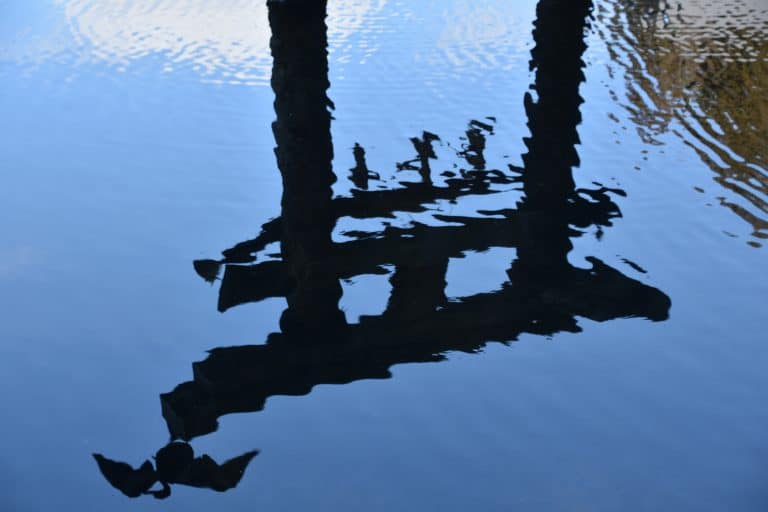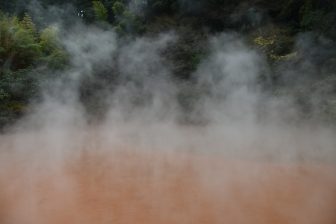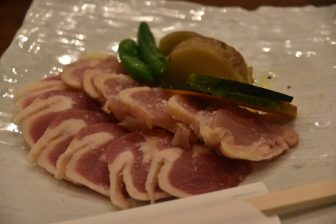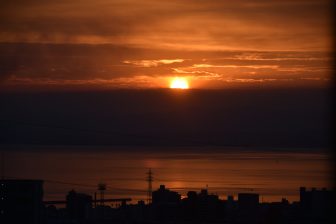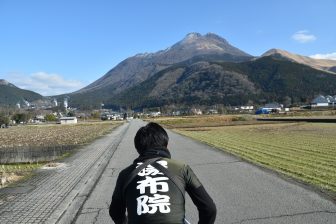Kyushu
Population: 12,921,155
Surface area: 42.231, 48
Best time to visit: Autumn and spring. The rainy season in June and July is not recommended and summer lasts until mid-September.
Prefectures: Oita, Fukuoka, Miyazaki, Kumamoto, Nagasaki, Saga, Kagoshima
Major cities: Fukuoka, Kumamoto, Nagasaki, Kita-Kyushu, Kagoshima, Beppu, Miyazaki.
Kyushu is the third largest island of Japan and covers 12% of the country’s surface area.
It is a volcanic island par excellence!
It is home to the highest active volcano in Japan, Mount Aso.
Another volcano that is also still active is Sakurajima which is more towards the south of the island in the prefecture of Kagoshima.
The climate of Kyushu is the most temperate but also the wettest in the whole of Japan.
It is an important region historically and culturally as well as from the point of view of productivity.
Kyushu has always been the gateway that has opened Japan up to the trade routes with the rest of Asia and this has made it part of a complex network of relationships that unite the various different countries which look out across the same waters.
In fact, Kyushu has a very close relationship with Korea, a country from which it is separated by only 250 kilometres of water and Korea, historically, is where much of the immigration and innovation into Japan has come from.
The shinkansen (bullet train) as yet does not cover all the cities of Kyushu.
For example, it has not yet reached Nagasaki but, completion of this project is expected by 2022.
Nevertheless, apart from the more rural areas and the national parks, the whole region is well serviced by the railway networks so there is no problem with using the national Japan Railway Pass or even the regional one if you have decided to dedicate a decent amount of time to this region which truly deserves an in-depth visit.
The Economy of Kyushu
As in other areas of Japan, Kyushu benefits from a good combination of industry and vast agricultural production, (rice, soya, sweet potatoes). The fishing industry has also flourished here and Nagasaki is an important centre for this particular industry.
Industry is mainly concentrated in the north. In the last century, the prefecture of Oita was strategically important because of its coal production.
Visiting Kyushu
Kyushu is a region that is rich in history and natural beauty with marvellous landscapes that include thermal springs as well as the production of genuine local products.
The people are friendly, open and very welcoming.
This is definitely an area that deserves a visit for at least a few days.
There are actually 7 prefectures in the region and each one of them can offer places to visit that are of great interest.
Fukuoka Prefecture
Is situated towards the north of the island and, historically, has been the gateway to the west of Japan.
The largest city is Fukuoka which is actually one of the largest cities in the country.
This was originally formed by the unification of the two separate areas of Hakata and the castle of Fukuoka.
Hakata has been retained as the name of the station district.
Fukuoka is actually closer to Seoul than it is to Tokyo and the connections with Korea have always been very strong.
The community of Chinese and Koreans is much valued here and tourism from the continent also has a strong presence.
Fukuoka is famous for one of the most popular and well attended festivals in Japan, the Hakata Gion which consists of a race between enormous floats with allegorical references, each one representing a different district of Hakata, the station quarter.
The festival takes place in July, reaching its climax on the 15th of the month.
Also of importance in Fukuoka due to its antiquity, is the shrine of Hakozaki.
Not far from the subway station of Gion is the Shofukuji, the first Zen temple to be built in Japan.
Travelling east of Fukuoka, you can visit the small town of Dazaifu which, during the Heian period, was the western capital of the realm and was looked upon as the Kyoto of the west.
It was in this town that the scholar Sugawara no Michizane was unjustly imprisoned and died just two years after he was exiled here.
In order to pacify his spirit, he became known as the patron divinity of the literati.
In addition to the Tenmangu shrine in Dazaifu, there is also the National Museum of Kyushu, the fourth largest museum in Japan which was opened in 2005.
There is much emphasis throughout the museum’s exhibitions on the role that Kyushu has played throughout Japanese history and continues to play today as a bridge towards the west.
The city of Kitakyushu can be found towards the north of Fukuoka and is renowned as one of the most important centres of iron and steel production in the world.
Also worth visiting is the shrine in the town of Munakata in which, since ancient times, it has been customary to pray for a safe voyage to the continent that is incident free.
Oita
The prefecture of Oita is one of the most verdant as well as having amongst the most significant number of places of worship in Kyushu.
Here, in Usa, at the start of the Kunisaki Peninsula, you will find the shrine of Hachiman, the protector of warriors, and one of the oldest shrines in Japan.
The Kunisaki Peninsula is also a place that is full of temples and shrines which makes for a fascinating destination that has the additional attraction of being just slightly off the traditional tourist track.
Also of interest is the area around Mount Hiko which is the largest ancient site of the mountain ascetics (yamabushi) of Kyushu.
Nearby, you can visit the coal mining area of Tagawa which has become a renowned site for the archaeological industry.
The nearby cities of Oita and Beppu, the prefecture’s main cities, are also its most bustling centres.
The Aquarium in Oita is certainly worth a visit – it is located just outside the city at the entrance to the “Monkey Park.”
There is also the prefecture’s Museum of Fine Arts which is worth a visit.
What puts Beppu on the map is its thermal springs and volcanic phenomena.
This is an area of Japan that offers a wealth of both features and each home has its own onsen.
There are spectacular volcanic phenomena and hot springs in evidence, (so much so that some have been renamed “the nine Hells” in association with the many hells of Buddhist cosmology).
Saga
Saga is the smallest prefecture in Kyushu. The majority of its territory is actually a National Park.
Worth visiting is the archaeological park of Yoshinogari which is the largest and most extensively detailed in Japan with reference to the Yayoi period.
In Saga, as in the rest of Kyushu, there are thermal springs everywhere.
A visit is recommended to the springs of Ureshino where it seems that the concentration of bicarbonate of soda in the water has notably beneficial effects on the skin.
From a historical point of view, the castle of Karatsu is of great importance and is situated some 50 kilometres to the east of Fukuoka.
Nagasaki
The prefecture of Nagasaki has enjoyed the distinction of being the meeting point between Japanese and European cultures over the centuries.
The city of Nagasaki gained importance under the Jesuits during the 16th century and after the expulsion and banishment of Christianity during the Tokugawa period, the small island of Deshima, opposite Nagasaki, became the only place where the Europeans, the Dutch, could live and trade with the Japanese.
The city was also a window to the western world because it was the only place in which the Japanese could learn about and eventually find out about scientific innovations and news emanating from Europe.
Nagasaki is also famous, along with Hiroshima, for the atomic bombs that were dropped by the Americans in 1945. It is now possible to visit a museum that records this tragic event.
The prefecture of Nagasaki has submitted an application for the meeting places where Japan and Christianity have encountered each other over time to become a Unesco World Heritage Site.
Amongst the places that have particular links to the history of Christianity in Japan, the castle of Shimabara is of especially symbolic value as this was the setting for the uprising against the shogun Tokugawa after the latter had put Kyushu under his control.
This uprising, which was initially in protest against the harsh fiscal conditions that had been imposed by the shogunate, turned into a Christian revolt that saw ferocious repression meted out by the central government which resulted in the massacre of thousands of rebels including women and children.
Also worth visiting in the prefecture of Nagasaki are the thermal springs at Unzen, a volcanic complex that has a wealth of warm waters and thermal baths.
Kumamoto
Located to the south and renowned for its citrus production and for its mascot, the delightful bear Kumamon, the prefecture of Kumamoto is somewhere that epitomises Kyushu in many aspects.
The beautiful castle in Kumamoto is well known and is the successor to the original that was built during the Edo period.
Also of great interest are the gardens of Suizenji in which there are reproductions in miniature of the 53 stations of the Tokaido Road, the famous route that connects Kyoto and Tokyo.
It is also possible to visit the house where Lafcadio Hearn, one of the first westerners to write books about Japan, lived for several years.
And, it would be impossible not to include a visit to Mount Aso, the volcano with one of the largest calderas in the world with a circumference of 100 kilometres.
The island of Amakusa, 60 kilometres to the south of Kumamoto saw a swathe of conversions to Christianity during the time of the missionaries and an equally forceful repression when Christianity was forbidden by the Tokugawa regime.
It is possible to visit various churches that were rebuilt during the twentieth century in some of the fishing villages, places where the kakure kirishitan, the Christians who continued to practice their faith in secret or who camouflaged it with traces of Buddhist practice resided.
Miyazagi
Miyazaki prefecture represents the coastline of Kyushu and faces out towards the Pacific Ocean.
In Miyazaki, the capital city of the same name, the most important monument is the shrine dedicated to the Emperor Jinmu, the mythical founder of Japan and close to this is the prefecture’s museum which covers a mixture of displays ranging from the natural to the ethnographic.
The greatest tourist attraction in the prefecture is Takachiho, a place of exceptional natural beauty in which, according to the legend, the nephew of Amaterasu, descended from the sky and founded the imperial dynasty.
Another legend tells the story that in a grotto in the area of Takachiho, the famous incident took place where Amaterasu, the sun goddess, hid herself and the light of the world was extinguished until the combined efforts of the gods prevailed upon her (the goddess / the sun) to emerge from the grotto and thus, return the light to the world.
Some scholars have conjectured that the origins of the imperial Japanese dynasty came from Kyushu as a consequence of the number of legends that link the deities with the imperial house in these lands.
Kagoshima
Is the southernmost prefecture in Kyushu.
Its historical name was originally Satsuma.
This province played a fundamental role in the Meiji Restoration, in particular because the first-class samurai of Satsuma had fought against the policy of compliance towards the western powers and, the endeavours to dislodge these contributed to the overthrowing of the Tokugawa government.
However, the Meiji government was exposed as being even more pro-western and anti the samurai than Tokugawa’s governance and this resulted in the rebellion against central government which culminated in what became known as the Seinan (south western) war.
The 2003 film, The Last Samurai, with Tom Cruise, is loosely based on this episode of Japanese history.
Because it is located in a gulf, at the foot of the Sakurajima volcano, Kagoshima is often referred to as the Naples of Japan and in actual fact, the two cities are twinned.
Due to its position in the extreme south of the country, Kagoshima was also the designated location for the relationship and control over Okinawa and the Ryukyu archipelago.
The 1914 volcanic eruption attached the island of Sakurajima to the mainland, but the ferry is still the most comfortable way to view this active volcano from the numerous observation posts around its craters.
Other attractions in the city are, the Aquarium which has a wide range of different fish including whale sharks and dolphins and the garden of Senganen which was built in 1658 by the Shimazu clan who were the lords of Satsuma who dominated the province up until the Meiji Restoration.
| Fukuoka | Kumamoto | Oita |
the rest of the Hell in Beppu
[ Dec.2019 ] In Beppu in Oita in Japan, we did the “Hell Tour”, which means visiting 7 places called Jigoku (hells) where the hot springs well up. 5 of them were in Kannawa Onsen…
local dishes in Kumamoto
[ Dec.2019 ] On the evening of the day that we did excursion to the outskirts of Kumamoto City in Kyushu in Japan, we went to a Japanese-style bar/restaurant called “Goen” which was recommended by the…
local dishes in Kumamoto
[ Dec.2019 ] On the evening of the day that we did excursion to the outskirts of Kumamoto City in Kyushu in Japan, we went to a Japanese-style bar/restaurant called “Goen” which was recommended by the…
great time in a Ryokan in Beppu
[ Dec.2019 ] The next destination of our short holiday in Kyushu in Japan was Beppu where we arrived by the limited express train, “Yufu No.3”. The Ryokan (Japanese style hotel) we had booked was…
rickshaw ride in Yufuin
[ Dec.2019 ] It was another fine day on our second day in Yufuin, the hot spring resort in Oita prefecture in Kyushu in Japan. The shuttle bus run by the accommodation took us to…

